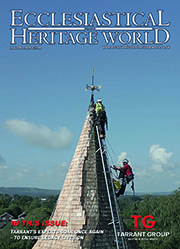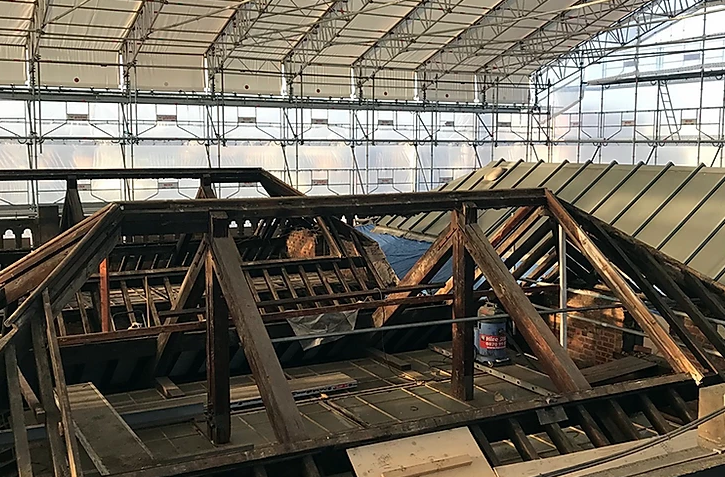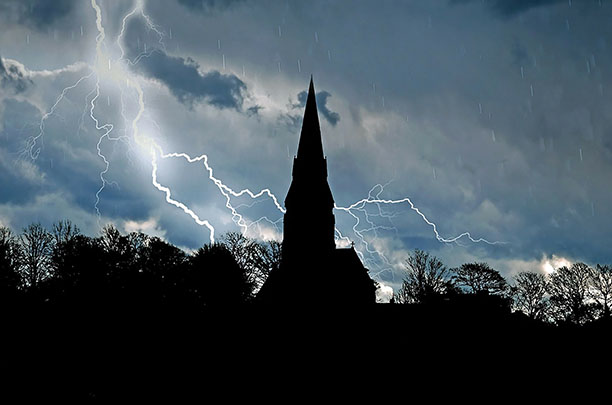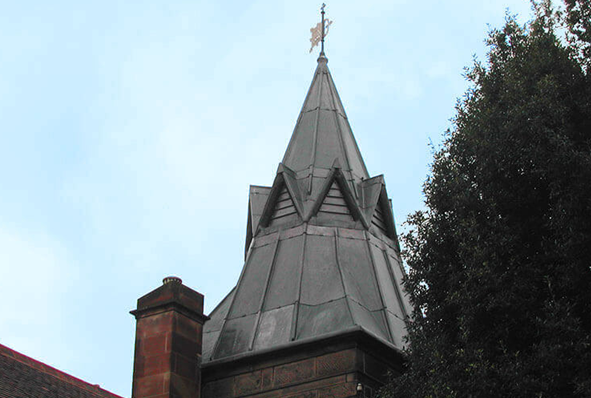Heritage Roofing
Heritage roofing - maintaining our iconic buildings
The UK is home to some of the most iconic buildings in the world, from stunning churches and cathedrals to historic stately homes. Each and every one of these remarkable feats of architecture requires regular maintenance to ensure they remain in the very best condition, allowing them to be enjoyed for generations.
Lightning Protection
When lightning strikes are you protected against this act of God?
The issue of lightning protection in churches is one that has exercised this publication for many years. In this four-part series of spotlights on the issue we will be revisiting various aspects of the subject, beginning with an overview of current thinking.
Traditional Lime
Lime: it’s better for buildings – and for the environment
It is now fairly well known that cement is not good for old buildings and that lime mortar should be used. But why? What are the advantages and what are the disadvantages? In order to begin to answer those questions it is necessary to understand the nature of traditional building, the process by which buildings used to be built, and how it differs from modern construction, the process by which we build today.
Audio Visual
Audio visual equipment in church buildings
This guidance is issued by the Church Buildings Council under section 55(1)(d) of the Dioceses, Mission and Pastoral Measure 2007. As it is statutory guidance, it must be considered with great care. The standards of good practice set out in the guidance should not be departed from unless the departure is justified by reasons that are spelled out clearly, logically and convincingly.
Read More...
CRE Events
Churches are coming under starter’s orders for CRE 25
Churches across the nation are beginning to make preparations for their visit to Christian Resources Exhibition’s CRE 25.
Insurance
You need to ensure that reasonable precautions are in place at your church to keep it safe for those who use it. To do this, you need to think about what might cause harm to people.
You will then need to decide if the precautions already in place are adequate. If they are not, you may need to identify further action to prevent any danger. When done formally, this is known as a risk assessment.
LPOW Grants
£23 million government package to support restoration of thousands of listed places of worship
Heritage Minister Sir Chris Bryant has announced that the Listed Places of Worship Grant Scheme will be extended into the next financial year, providing £23 million so that thousands of historical buildings, including churches, synagogues, mosques and temples, can carry out restoration work.
Lead Roofing
Lead is one of the oldest materials in the roofing industry and is still commonly used throughout the world today.
Lead roofing is a traditional roofing method which has been used in the industry for hundreds of years, and is therefore proven to be extremely reliable. Lead roofing, and sand-cast lead, in particular is ideal for old buildings such as churches or historical renovations, whereas milled lead roofing is a mass-produced alternative, used for precision and accuracy in homes and commercial buildings alike.
Home
St Asaph
A wee city with a population of less than 4,000, the greatest attraction here is St Asaph's Cathedral. No bigger than most village churches, it is the smallest cathedral in the UK
Early History
Llanelwy is the Welsh name for the place called St Asaph. It means the sacred religious enclosure on the banks of the River Elwy. It is impossible to give an historically accurate account of the beginnings of Christianity in the early settlement at Llanelwy. Legend and tradition are confusingly mixed and there is no archaeological evidence or written record before the twelfth century. The legend of the founding of the church and monastery between the year c.560 and c.573 is to be found in 'The life of St Kentigern' written by Jocelyn, a monk of Furness Abbey c.1180. St Kentigern was the bishop of Strathclyde; he was driven into exile and founded a monastery at Llanelwy where he remained until his return to Scotland in 573. There are no local commemorations to Kentigern. St Asaph replaced him as abbot-bishop until he died in 596.
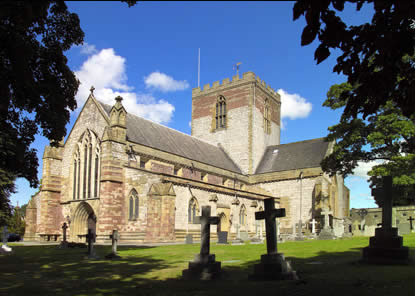
In the eastern window of the north aisle there are pictures of St Kentigern and St Asaph illustrating two of the legends told by Jocelyn. Miraculously, St Kentigern helps to find the gold ring which the Queen has lost and it is discovered in a salmon caught by the saint. St Asaph, as a boy, was sent by St Kentigern to bring coals that he might warm himself. Having nothing else in which to carry the burning coals he uses his cloak but neither his own flesh nor the cloak were burnt.
St Asaph was a local saint whose name is found in the neighbouring Llanasa(Asa's Church), Pantasa (Asa's Hollow), Ffynnon Asa (Asa's Well), Onen Asa (Asa's Ash-tree); these place names suggest a strong religious settlement. Asaph's name and reputation was much advanced by the creation of a new territorial episcopal see at Llanelwy in the twelfth century. From about 1073 Rhuddlan was in the possession of the Normans and it was expedient that they protected their interests and those of the Province of Canterbury, Theobald, consecrated Gilbert as its first bishop.
The next bishop, Geoffrey of Monmouth, was styled as bishop of the Church of St Asaph in 1152. In spite of the existing religious settlement at Llanelwy scholars believe that a new cathedral was built on a new site some distance away from the older parish church. By the year 1281 the relics of St Asaph had been removed from Llanasa and were enshrined in the newly-built cathedral. Gerald of Wales came here in 1188 with Archbishop Baldwin who said Mass. Perhaps in contempt of Bishop Adam, whom Gerald the Archdeacon had excommunicated at Kerry in 1176, he wrote of 'the poverty-stricken little Cathedral of St Asaph'.
The Thirteenth Century
The site chosen at Llanelwy was in a perilous position being on the 'war path' of the Welsh Princes and English Kings. How much destruction the new building suffered in the thirteenth century is not known. Some of the early building work begun by bishop Hugh (1235-40) has survived in the gables and chamfered buttresses on the west front, the south west corner buttresses, and the walls of the early English choir.
A significant event was the appointment of Anian II as bishop (1268-93); his effigy is in the south aisle. As Dominican Prior of Rhuddlan he was known as 'the black friar of Nannau and as the best and stoutest upholder ever seen of the rights of his bishopric'. Anian withstood the enmity of Llwelyn ap Gruffydd, the last Prince of Wales, and sought the protection of King Edward I. The King was in favour of the removal of the Cathedral church from Llanelwy to Rhuddlan and promised in 1281 an ample site and a thousand marcs towards building the new church. It was said that at Llanelwy the canons 'had little protection, and where, because of its location, even on great festival days the canons had to celebrate without a congregation'.
Anian was in favour but the project was abandoned when on Palm Sunday 1282 the Welsh revolted and sacked the castle at Hawarden. Later, in June, there was the accidental burning of the cathedral by English soldiery whom Anian promptly excommunicated, having previously refused to do to the Welsh rebels. Out of favour with Edward I the Bishop fled from St Asaph nevermore to enjoy the King's confidence. Archbishop Pecham intervened and insisted that the diocesan see remain at Llanelwy and that the Cathedral church be rebuilt. As a sign of Anian's fall from Edward's favour the small sum of one hundred pounds was paid as compensation for damage to the Dean and Chapter.
For more Information visit http://www.stasaphcathedral.org.uk







